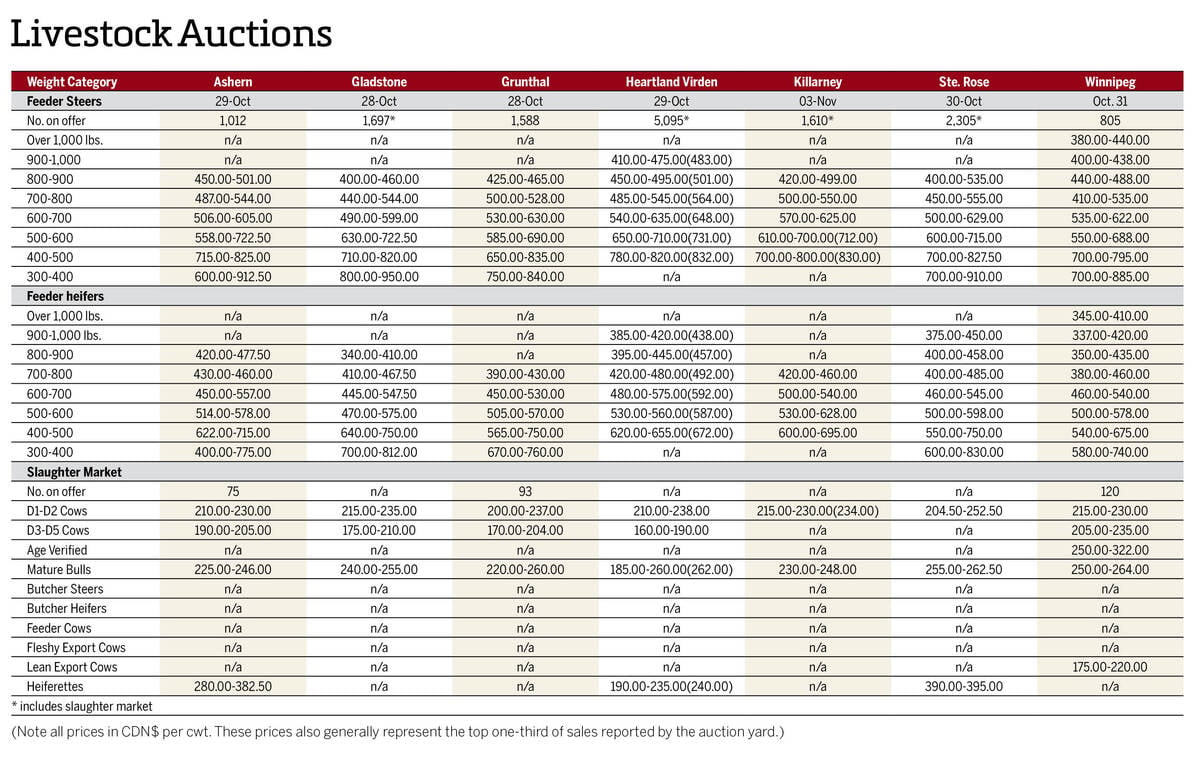While cleaning out the eavestroughs the other day, I unwittingly disturbed a hidden wasp nest, resulting in at least half a dozen stings on my hands and face.
The pain eventually subsided but dealing with the nest turned out to be a bit more difficult than expected as they had found a crack between the stucco and the roofline.
The first three stores where I went to buy wasp spray were sold out, but the wasps were eventually killed and the crack filled – although my quick 15-minute Saturday job turned into an all-day affair.
Read Also

Manitoba cattle prices, Nov. 4
Manitoba cattle sale prices for the week of Oct. 28 to Nov. 4, 2025.
Watching the markets is often like that. Expectations that things will go one way are thwarted by outside forces.
Wheat is grown all around the world, which means a proverbial wasp can easily show up somewhere unexpected and drive North American markets previously focused on their own crop conditions.
India
India is the world’s second largest wheat producer after China but consumes most of that domestically and is rarely a factor in terms of global exports or imports.
However, rising domestic prices and ideas that the country’s production may not have been as large as official data, has led to talk that the government may do away with its high import tariffs, or at least lower them, to ease the financial burden on citizens.
Reports of a deal to bring in five million tonnes of Russian wheat have yet to be confirmed, but India is also sitting on large domestic stockpiles its government could release if needed.
Russia/Ukraine
Given the ongoing conflict, production and export reports from the region should be taken with a large grain of salt, but the past week did see several private forecasters raise their projections on Russian wheat production and exports.
Ukrainian wheat production also saw upward revisions, but questions remain over how much will be able to leave the country, given the end of the safe-haven Black Sea corridor.
Australia
Australian wheat production can be wide ranging from year to year. Last year’s record crop is unlikely to be repeated as El Nino weather patterns and resulting dryness concerns have already dropped yield estimates.
Argentina
After a drought cut sharply into Argentina’s wheat crop in 2022-23, improving moisture conditions should see an improvement in the crop, which saw seeding wrap up in early August.
United States
Closer to home, the U.S. Department of Agriculture is now forecasting spring wheat yields of 41.8 bushels per acre, which would be down by 3.4 bu./ac. from an earlier forecast. Total spring wheat production in the country is forecast at 450 million bushels, down from 482 million a year ago.
















